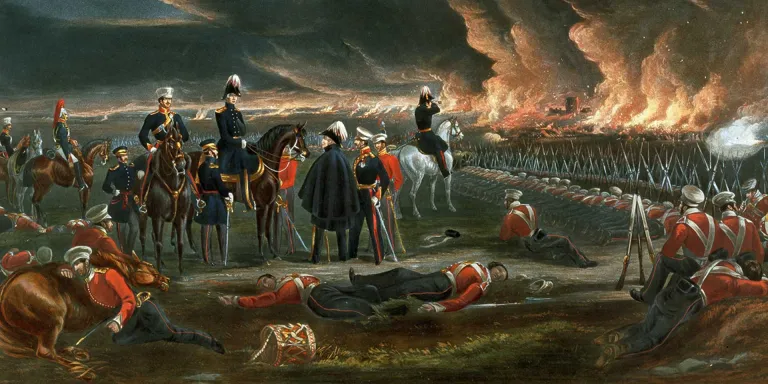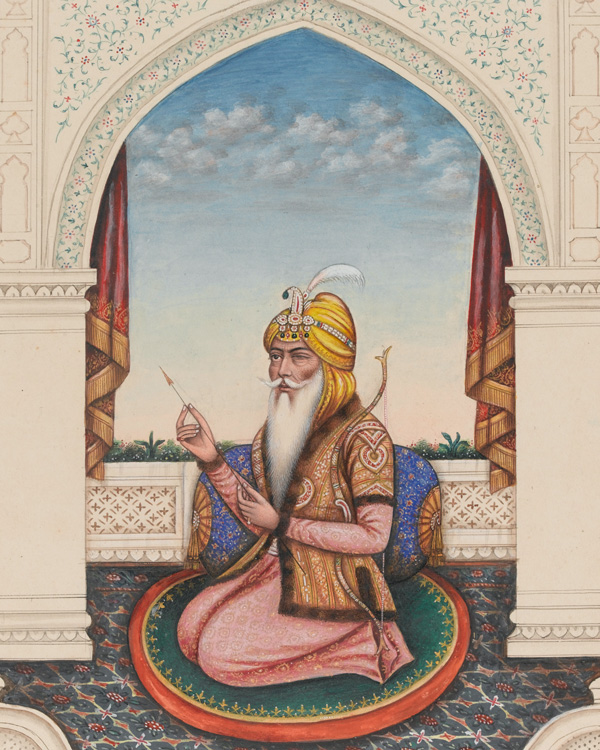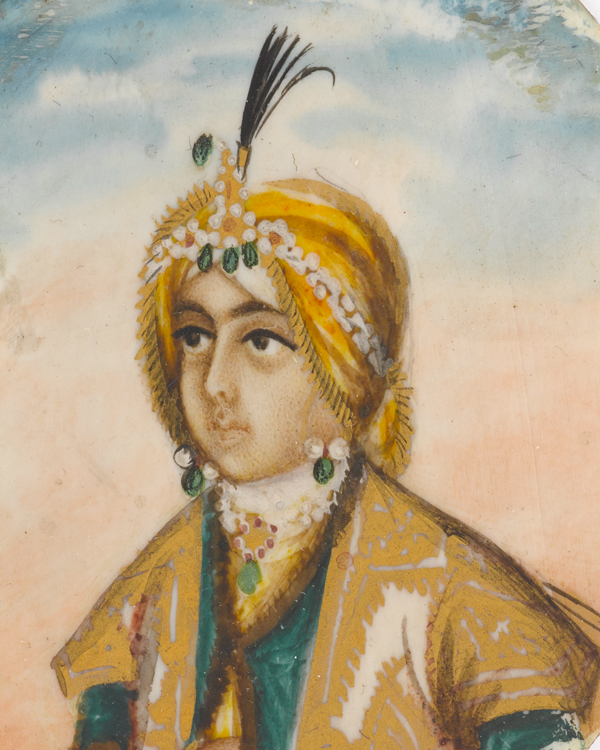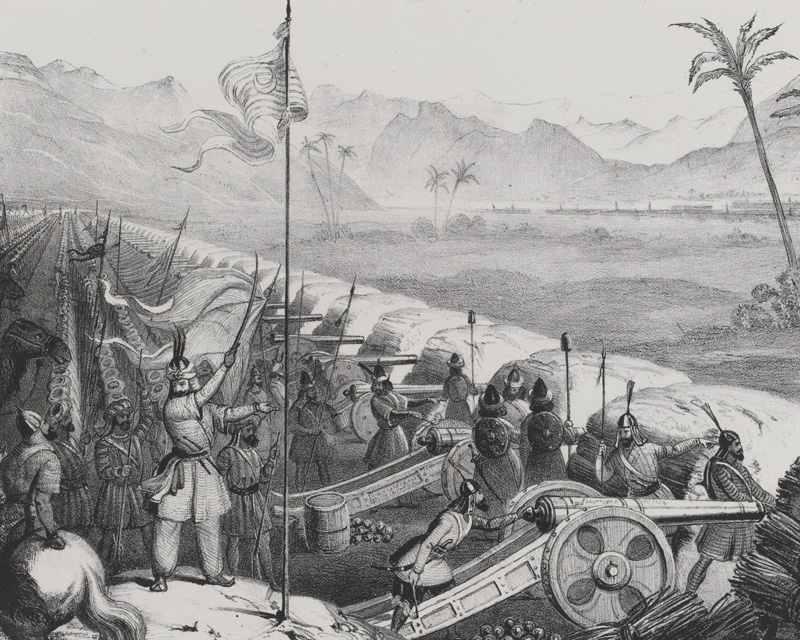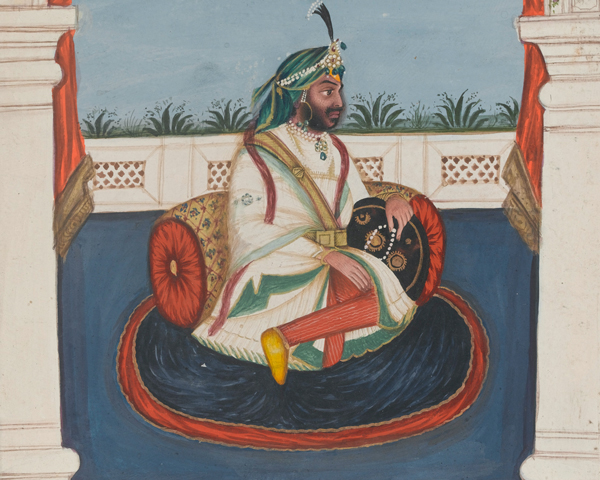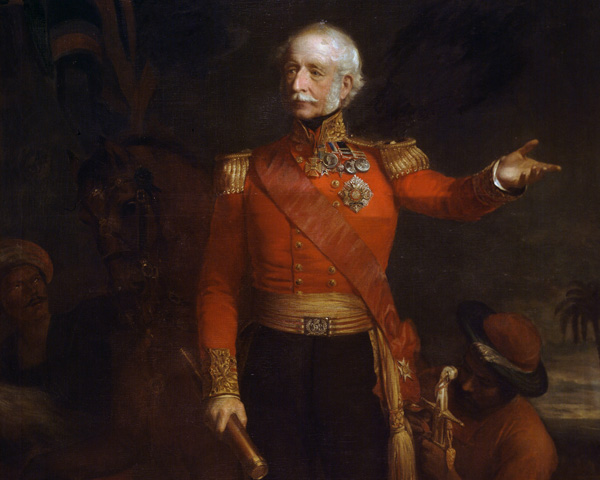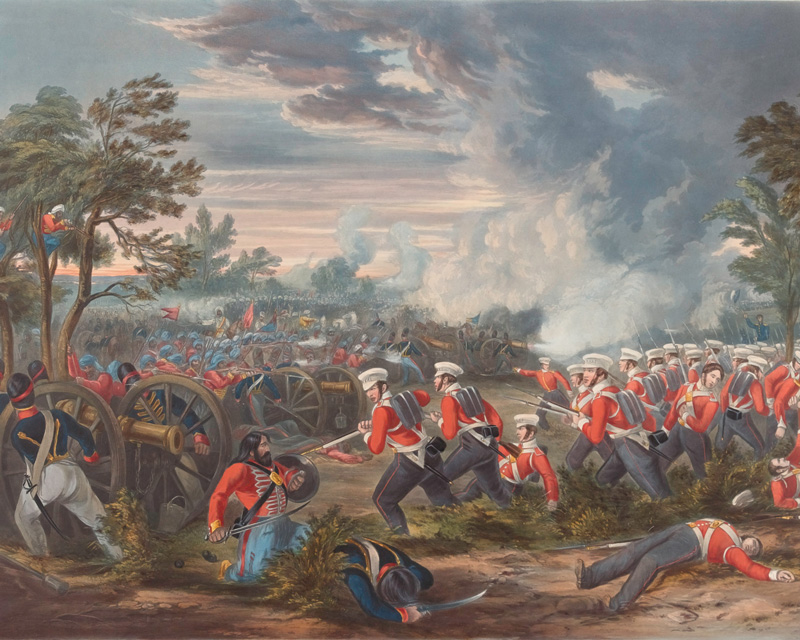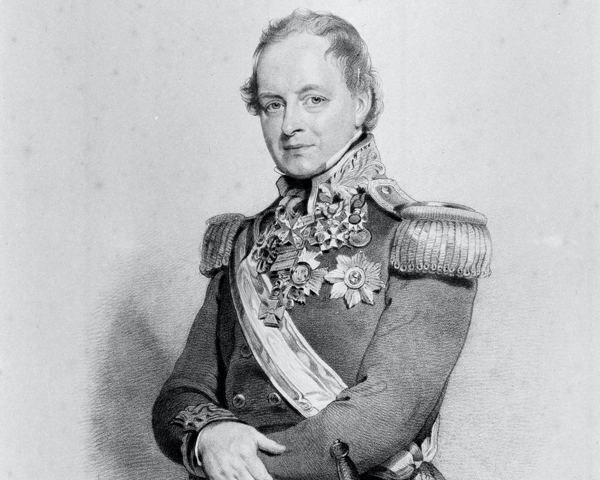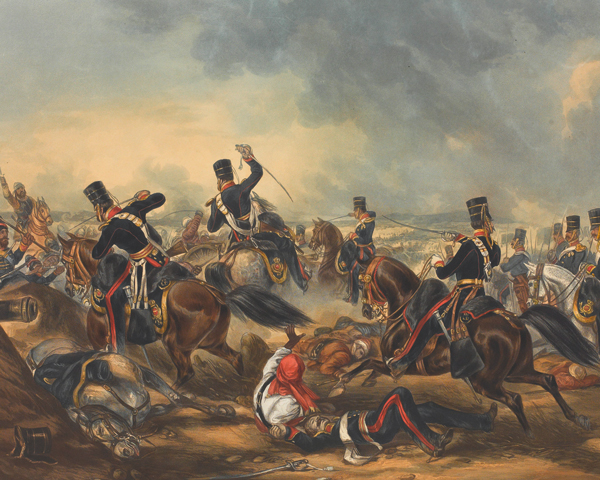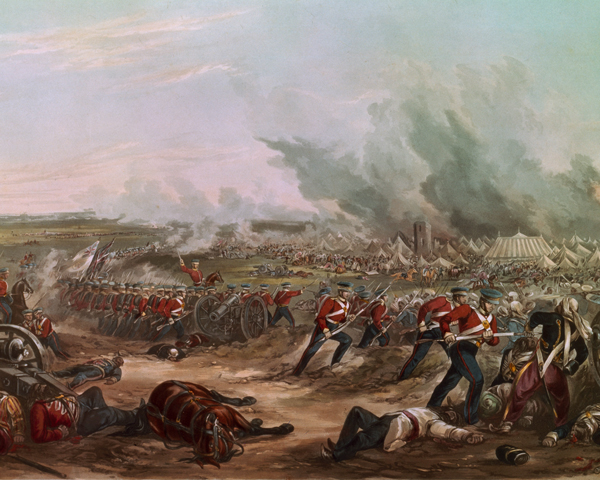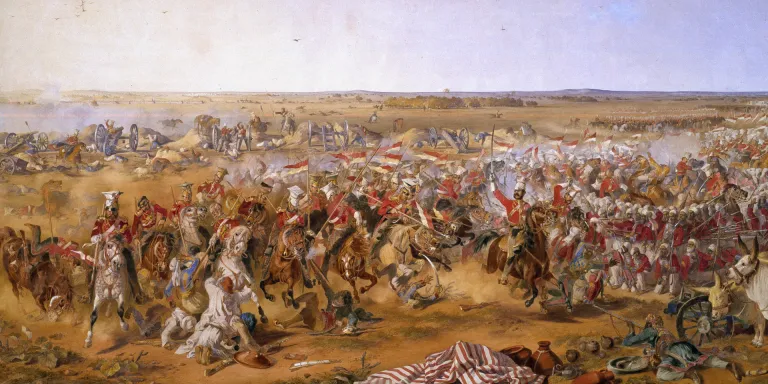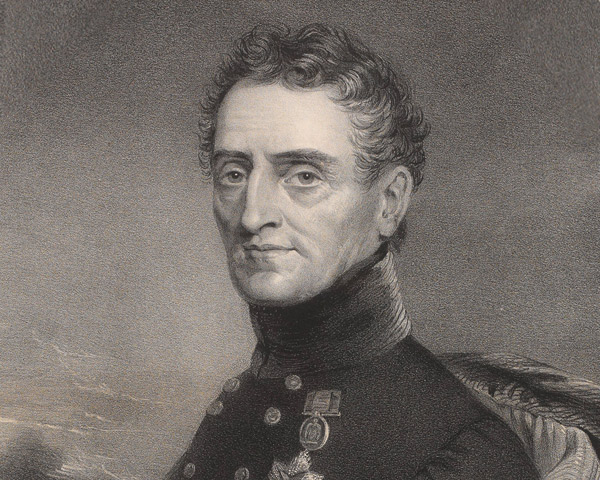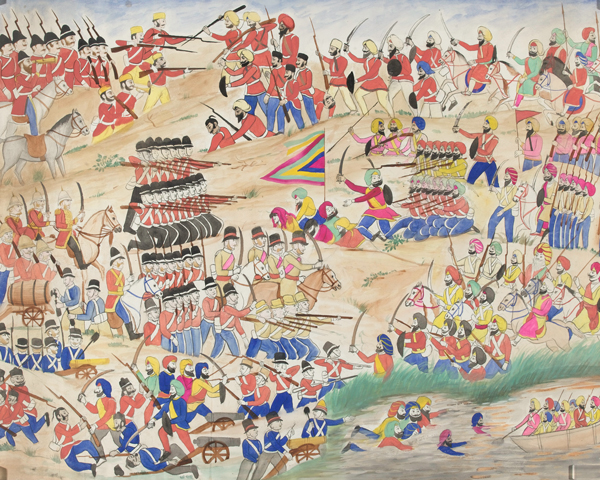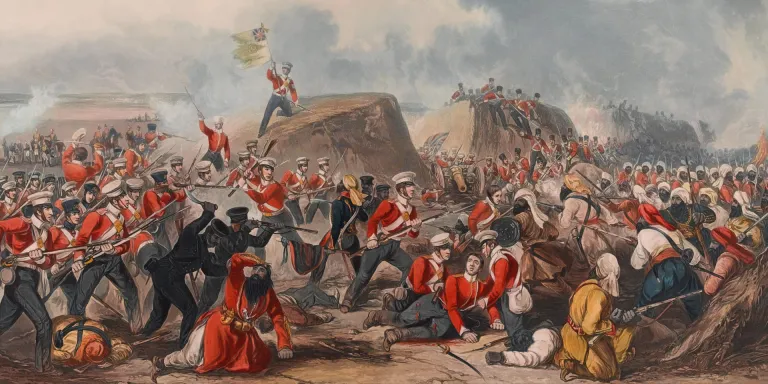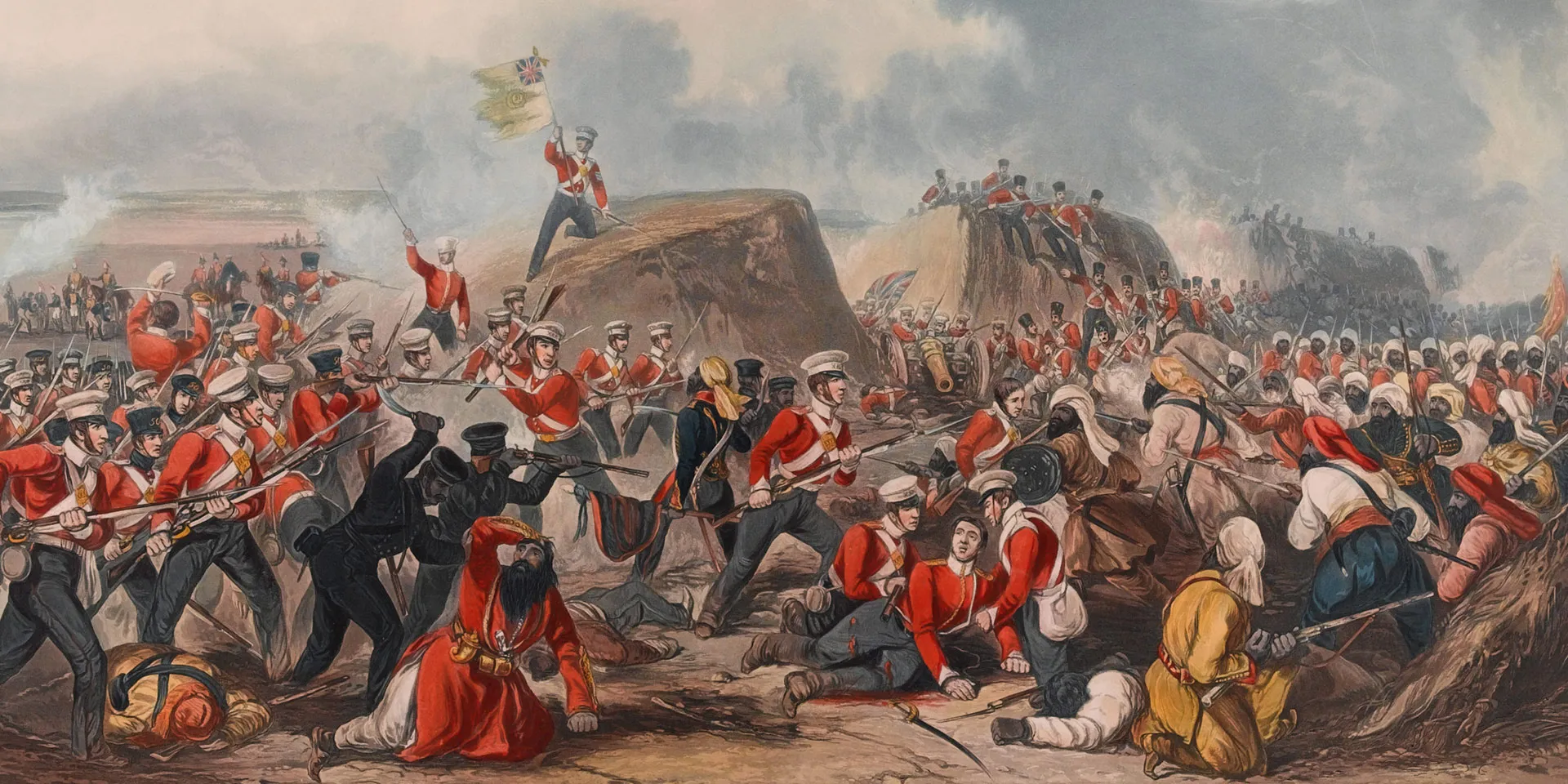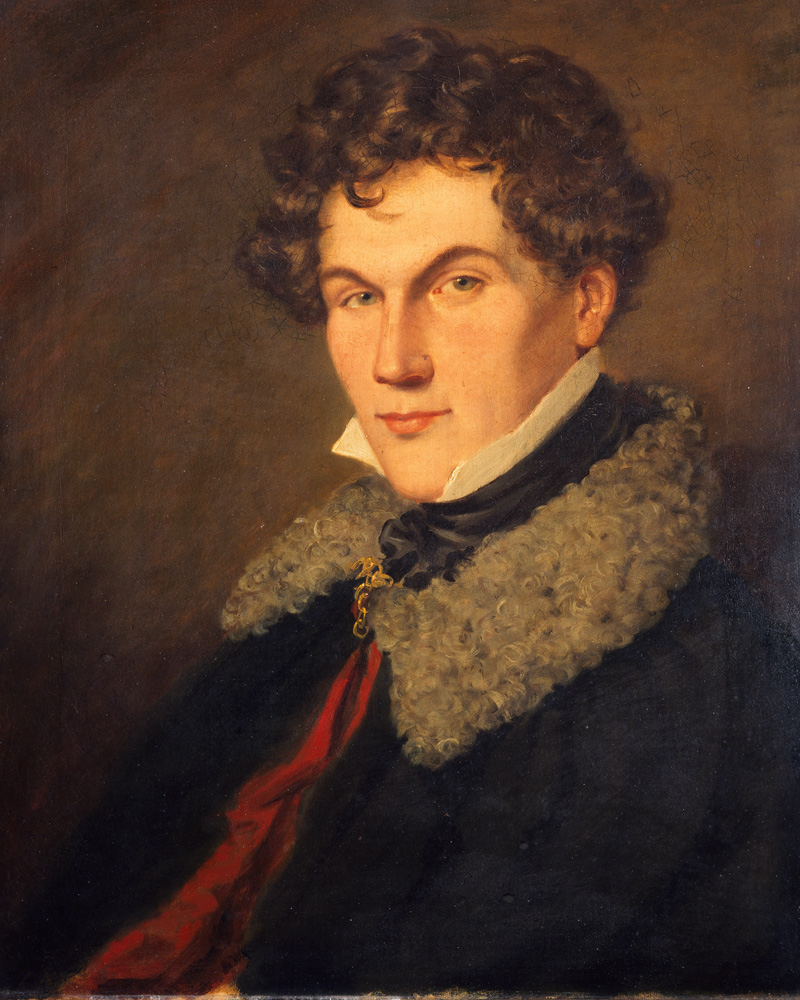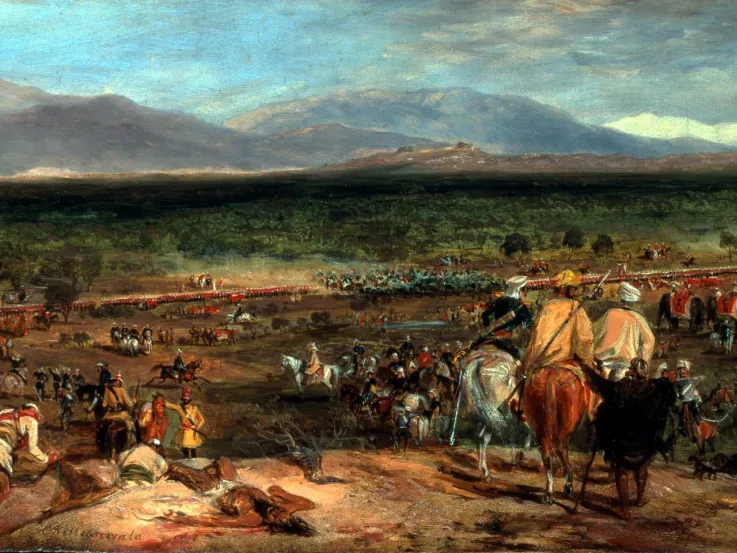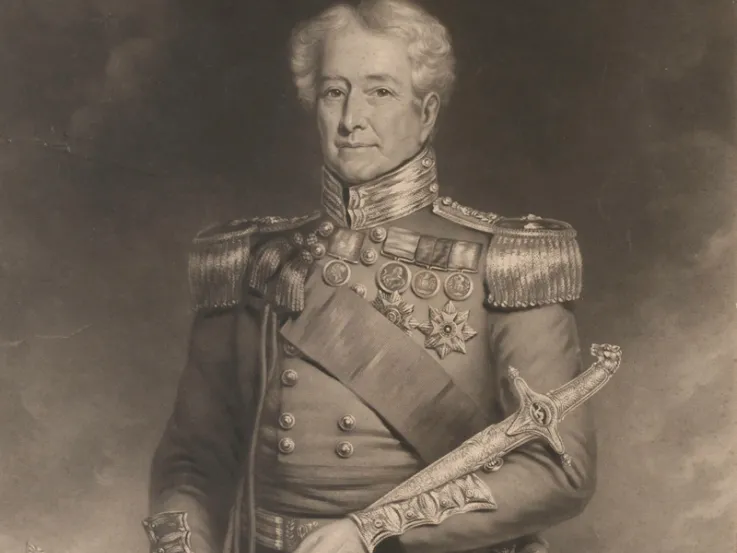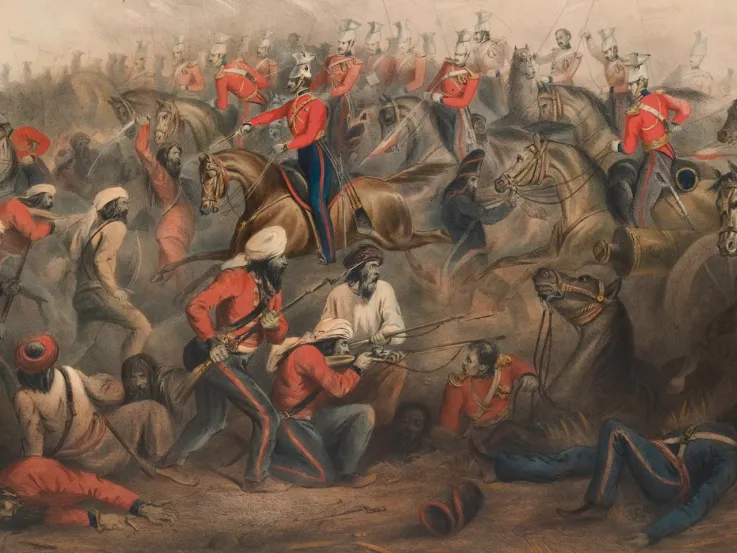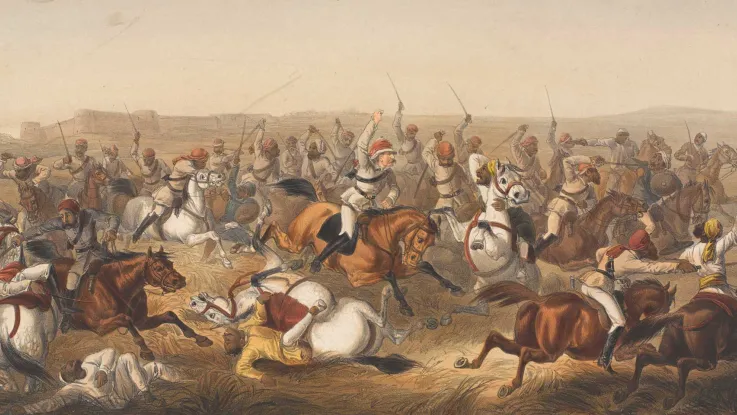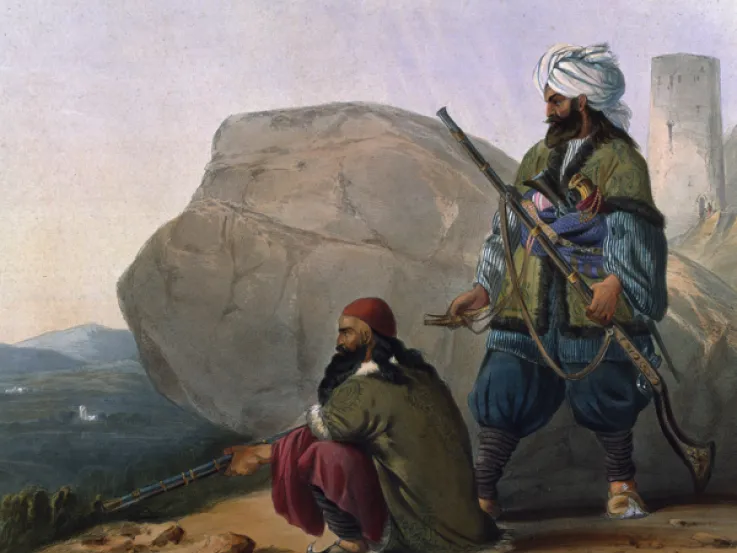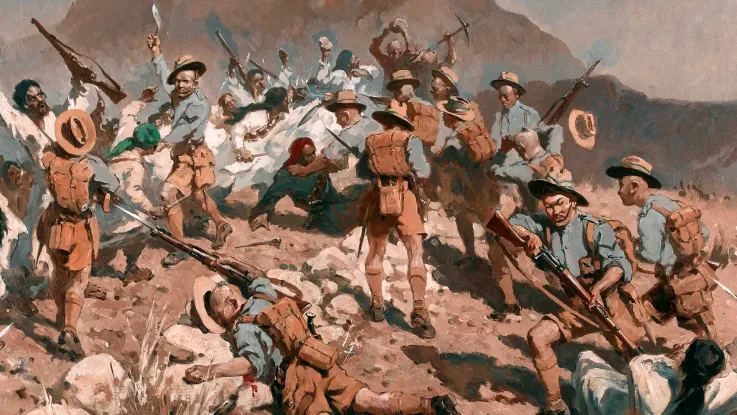Night bivouac of the British troops at Ferozeshah, 21 December 1845
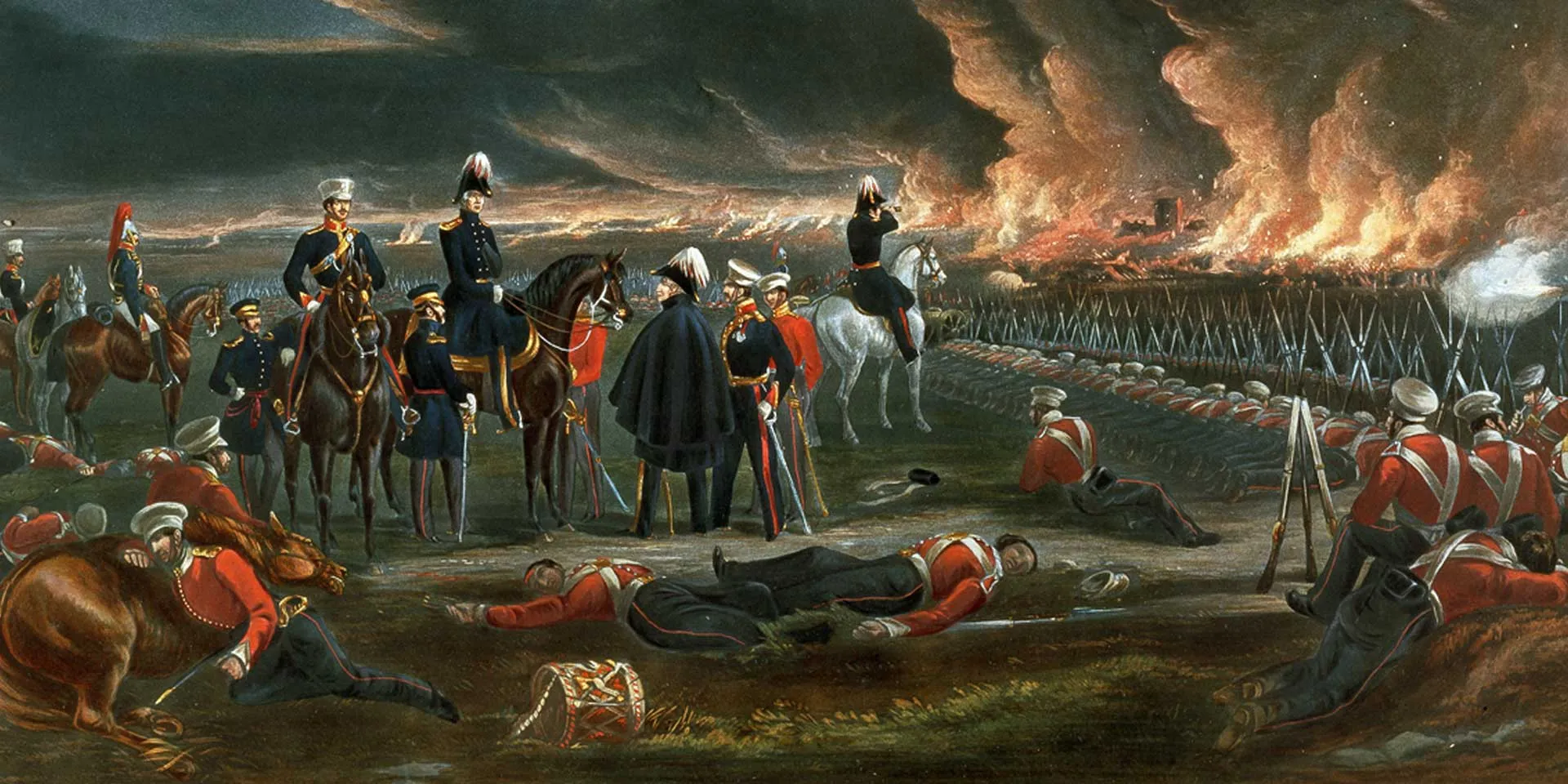
Sikh Empire
During the early 19th century, the Sikh kingdom of the Punjab (a region now encompassing parts of northern India and eastern Pakistan) was built and expanded under the rule of Maharaja Ranjit Singh. During the same period, British India was also growing, under the control of the East India Company, so that by the 1830s its territory was adjacent to the Punjab.
Ranjit Singh was a skilled politician, who maintained an uneasy alliance with the British, while increasing the strength of his army to deter any possible aggression. However, when he died in 1839, the Punjab fell into chaos. There was a succession of weak and short-lived rulers - some of whom were assassinated - and increasing tension between the army and royal court, where the infant Duleep Singh was eventually installed as Maharaja, with his mother as Regent.
Eyeing the disorder with concern, the British started to build up their forces on the borders of the Punjab, strengthening their cantonment at Ferozepore. Some British officials hoped for war, believing the Sikhs were the only remaining power that could threaten their hold over India.
Maharajah Ranjit Singh, c1839
Maharaja Duleep Singh, c1845
Khalsa
The Sikh army, the Khalsa (literally ‘the pure’), was probably the most formidable opponent the British faced on the Indian subcontinent. It was composed of traditional Indian irregular cavalry and infantry, alongside European-trained regulars. The latter even wore redcoats like the British Army and East India Company’s armies. The Sikh artillery was of a particularly high standard, but its cavalry units often lacked discipline.
Although it contained a small minority of Hindu and Muslim Punjabi and Kashmiri troops, the vast majority of its soldiers were Sikhs who viewed themselves as the true embodiment of the Sikh nation and religion.
Certain factions within the Khalsa, believing a clash inevitable, were emboldened by recent British setbacks in the First Afghan War (1839-42) and the vulnerability this exposed.
The Khalsa's artillery at Ferozeshah, 1845
Outbreak
The growing tension eventually led the Khalsa to cross the Sutlej River into British territory on 11 December 1845, hoping to catch the latter unprepared. Members of the Sikh court who wanted to curtail the Khalsa’s growing power may have encouraged this risky act of aggression.
Indeed, the precise motives for some of the Sikh leaders’ actions remain disputed. Some of the Khalsa’s own commanders, such as Generals Lal Singh and Teg Singh, were later accused of helping the British and betraying their troops during the campaign.
Raja Lal Singh, c1845
General Sir Hugh Gough, 1850
Mudki
One Sikh army, under Tej Singh, advanced on Ferozepore cantonment, but made no effort to attack the exposed British force there. At the same time, Lal Singh led another army - consisting of 10,000 cavalry, 4,000 infantry and 22 guns - towards Mudki, some 18 miles (29km) from Ferozepore.
On 18 December 1845, Lal Singh's army met a British-Indian force of 12,000 troops and 42 guns that had been despatched under the command of General Sir Hugh Gough, the Commander-in-Chief in India, and Viscount Henry Hardinge, Governor-General of India, to reinforce Ferozepore.
The ensuing struggle was decided when a British cavalry charge turned the left flank of the Khalsa’s position, forcing the Sikhs to retire with heavy losses during the night. Lal Singh had left the fight much earlier. The Sikh rank and file, however, had shown fierce resistance, while the Khalsa’s artillery inflicted many casualties, including brigade commanders Major-General Sir Robert Sale and Major-General Sir John John McCaskill.
The Battle of Mudki, 18 December 1845
General Viscount Hardinge, Governor General of India, c1846
Ferozeshah
The Battle of Mudki decided little. The following day, the British advanced on nearby Ferozeshah, where they encountered a Sikh army of around 40,000 troops, again led by Lal Singh, positioned behind strong entrenchments.
Gough wished to attack at once, but Hardinge used his position as Governor General to overrule him, insisting they wait for more troops from Ferozepore. When the reinforcements arrived, on 21 December, Gough's 18,000-strong force attacked the Sikh defences. By evening, these had only been partially taken. A renewed assault the following morning forced the Sikhs out, but at heavy cost to the British.
When a new Sikh army arrived, under the command of Tej Singh, Gough withdrew his weakened force - now low on supplies - to the captured entrenchments to await its attack. But the Sikhs withdrew.
Perhaps the Sikhs overestimated British strength and supplies, and believed they would not be able to eject them. Alternatively, their retreat may have been motivated by the treachery of their generals. Whatever the reason, this was a lucky escape for Hardinge and Gough.
The 3rd Light Dragoons at Ferozeshah, 21 December 1845
The Battle of Ferozeshah, 22 December 1845
Both sides reinforce
Gough's army was exhausted and in need of rest and reinforcement. Likewise, the Sikhs were temporarily put on the back foot by the two defeats and suspicions around their commanders' motives.
However, the Sikhs soon mobilised new units and moved to renew the war. They re-crossed the Sutlej and established a bridgehead at Sobraon. To support this operation, Ranjodh Singh Majithia led another Sikh force to attack the British fort at Ludhiana and threaten their supply lines.
The 16th Lancers at the Battle of Aliwal, 28 January 1846
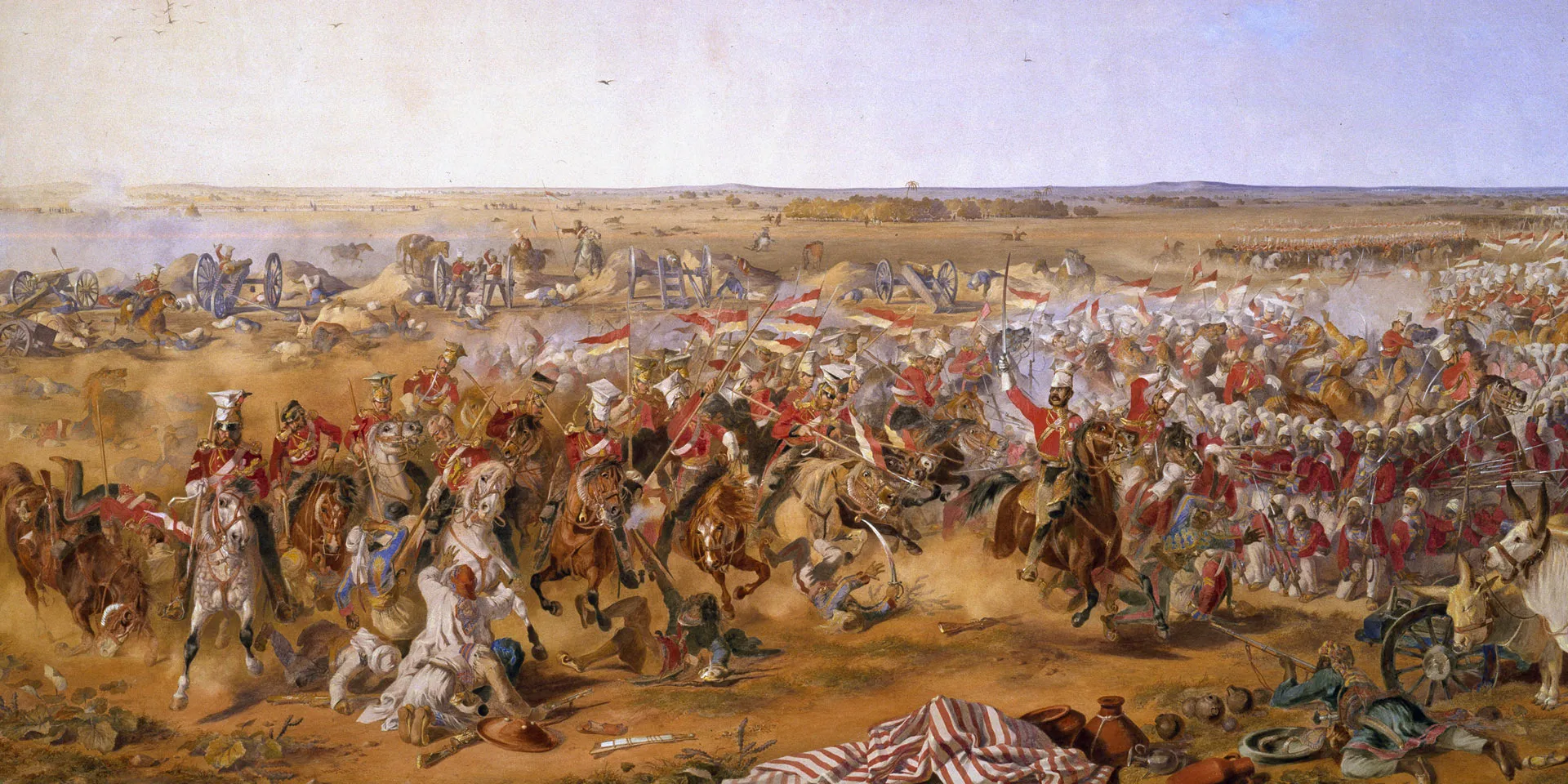
Aliwal
Alerted to this threat, Gough detached troops under General Sir Harry Smith to counter Ranjodh Singh. Although the Sikh irregular cavalry harassed his column and captured his baggage, after an exhausting march Smith eventually reached Ludhiana ahead of the main Sikh force.
The Ludhiana garrison reinforced his troops and at nearby Aliwal, on 28 January 1846, he won a model victory, rolling up the Sikh line, inflicting around 3,000 casualties for the cost of only 475 British and Indian troops, and eliminating the threat to the British rear.
General Sir Harry Smith, c1847
An Indian interpretation of the Battle of Sobraon, 1846
Sobraon
Smith now moved to re-join Gough. The reinforced British then successfully attacked the main Sikh force at Sobraon on 10 February 1846.
The Sikhs once again occupied an entrenched position, and British and Indian troops advanced under intense Sikh artillery fire. The engineers eventually blew a breach in the fortifications, and British cavalry and horse artillery pushed through it to engage the Sikhs in the centre of their position.
The Sikhs fought with their backs to the River Sutlej, refusing to surrender. As a result, casualties on both sides were high. British losses were more than 2,000; the Sikhs sustained perhaps as many as 10,000.
Many Sikhs were unable to escape as their pontoon bridges across the river had been destroyed. It is still debated whether this was the result of too much traffic trying to cross, or whether Tej Singh - who had fled the battlefield early - deliberately cast the boats loose. His defenders claim he destroyed the bridges to delay Gough’s advance on the Sikh capital, Lahore. But the British soon reached it anyway.
‘The Sikh artillery, with whom we contended, were picked men, both for valour and size… We lost lots of men before we got to the enemy’s principal battery, for we were pushed, as it were, into the lion’s mouth; when we did reach it, the gunners resorted to their tulwars and we our bayonets, then came the tug of war with clashing steel in earnest... The ground in a few minutes was sprinkled with the blood of hundreds of brave men. ‘Those overgrown brutes of artillery men… fought with unusual courage, many of their lives being bought at the price of ours, i.e. when some of our men plunged their bayonets into the Sikhs, they held them fast by the sockets with their left hands, and cut our men’s heads off with their massive tulwars, with deep regret I saw several of my comrades thus killed.’
Lieutenant JW Baldwin recalling the Battle of Sobraon - 1846
Treaty
The victory at Sobraon led to the Treaty of Lahore that brought an end to the war. The Sikhs conceded large tracts of the Punjab to the British, including the Jullundur Doab and Hazara, along with several important forts and towns. The treaty also led to Jammu and Kashmir becoming a separate princely state under British control.
Lal Singh was confirmed as Wazir of Lahore, but later fell from grace after fomenting trouble in Kashmir. He was eventually exiled from the Punjab by the British.
The East India Company appointed Colonel Sir Henry Lawrence as a Resident to oversee the royal court and the young Maharaja Duleep Singh. A large British garrison was also stationed in the capital.
Two years on, anger at this British interference in the government caused a revolt that led to the Second Sikh War (1848-49).
Lieutenant (later Brigadier Sir) Henry Lawrence, the first British Resident at Lahore, 1828

